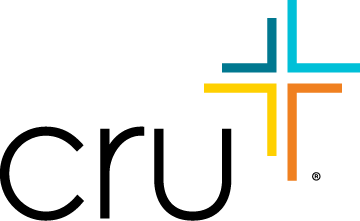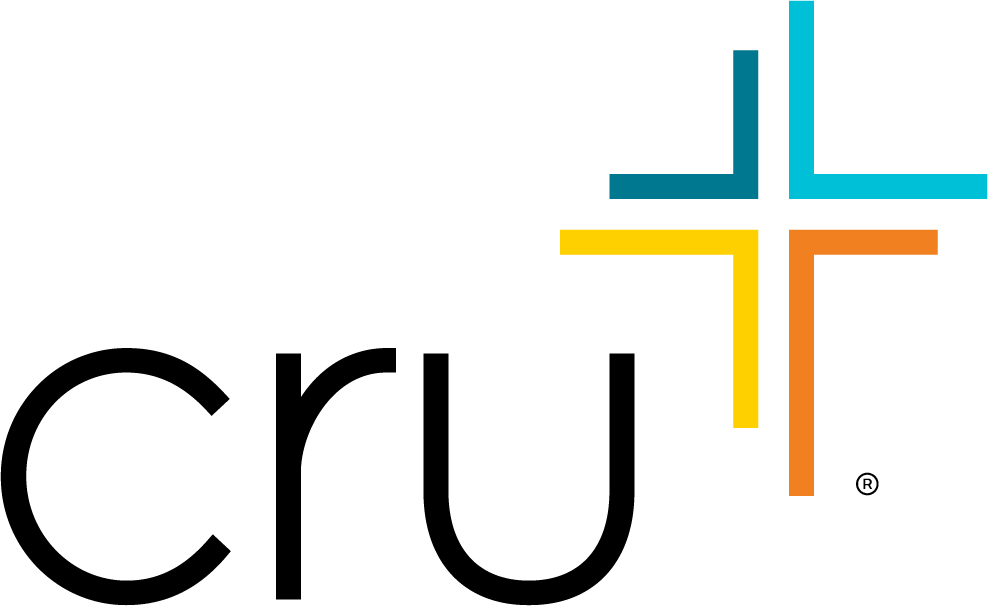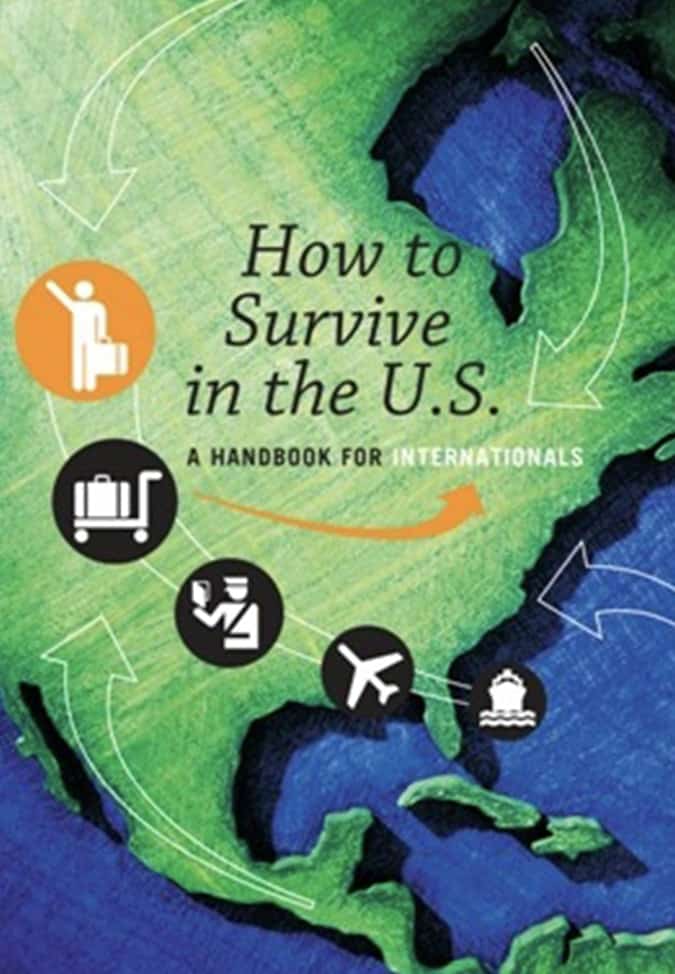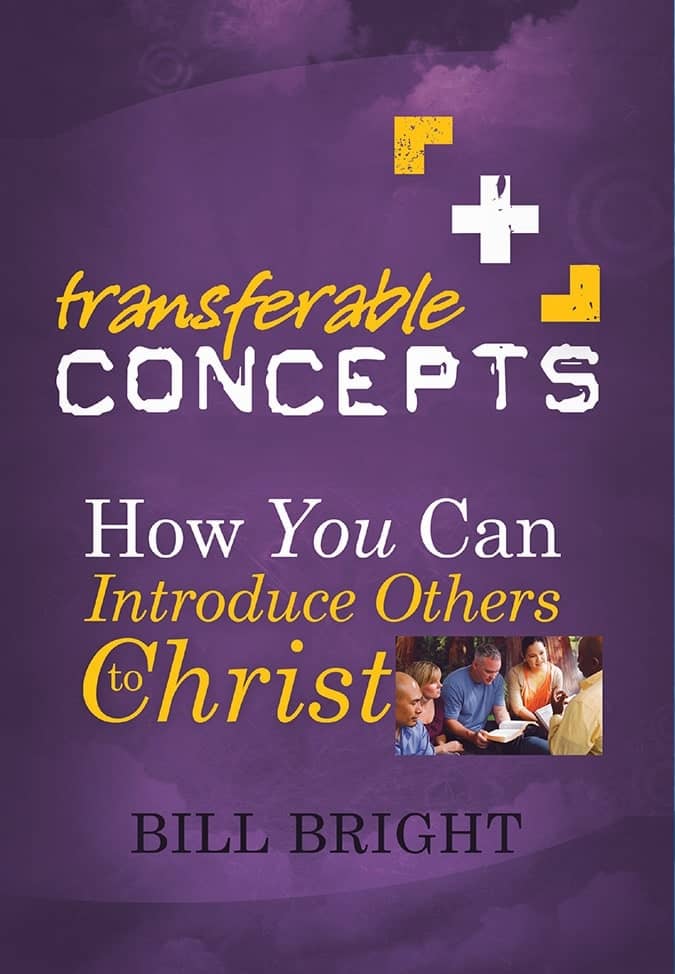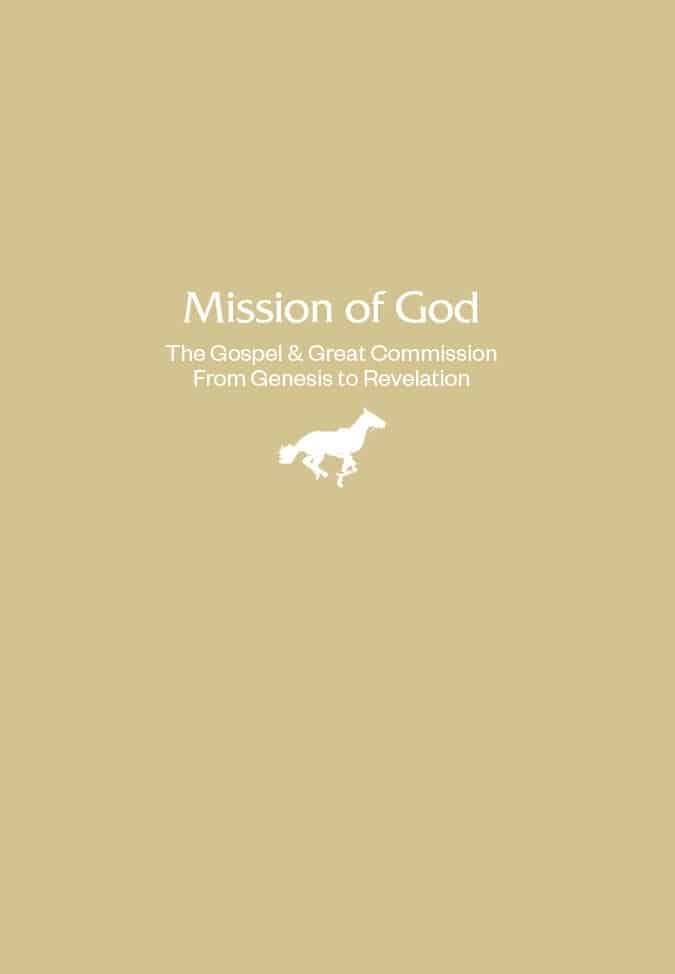A Movement(s) Building Model
The principles in this document provide leaders with a framework and a toolset to develop win-build-send movements. The model assumes that a leader has successfully launched a movement. It walks through a breadth of needs that a leader will discover as we seek to grow where we are and go where we are not. It addresses where a leader should focus, what resources they must secure, how to raise movement leaders, how to successfully plan for a growing movement and what results we should observe. This article will have 6 sections:
I. Right Focus
II. Right Resources
III. Release Ownership
IV. Right Processes and Practices
V. Right Outcomes
VI. Right Time
I. RIGHT FOCUS“If a man does not know to what port he is steering, no wind is favorable to him.”— Seneca
Focus has to do with vision. It answers critical questions: What you are shooting for? Where are you going? Why does it matter? The why question is by far the most important. The ultimate reason behind our efforts to deliver the gospel to students and faculty, to make disciples and send them out to the world, is Jesus. Because of who He is and what He has done on behalf of people, we respond to His call to join Him in what He is doing in the world today. This is the direction we are heading. Christ is central to everything we do. We call on Him in prayer as we worship, as we plan, and as we go. We live our lives surrendered to Him and serve to His glory and honor.
A compelling, biblical, Holy Spirit-inspired vision enflames the hearts of everyone involved. Vision is hard to put into a statement; a word picture might better describe a vision. Simply speaking, our vision is movements everywhere so that every student and faculty knows someone who truly follows Jesus.
In the US Campus Ministry, we define a movement as the collective activity of committed, multiplying disciples as they band together and trust God for an impact greater than their own individual ministries. Movements foster camaraderie, momentum, enthusiasm and faith. People sense God’s involvement as they prayerfully pursue His leading and direction and then go after it together.
Movements need clear vision that is constantly in view and known by everyone involved—no matter their level of commitment. As you consider your vision, remember:
1. A God-honoring vision must be Christ-centered.
2. Vision begins with your desired end in mind. Vision paints a portrait of the future. So, be specific about what the movement might look like in a semester, in a school year or perhaps over several years. Vision will address questions like: a) How many multipliers will we need to give everyone a chance to hear the gospel? b) How will we effectively raise up a solid freshman class every year? c) How many movements will it take to reach your given scope?
3. Movements “everywhere” means to the ends of the earth, all nations and people groups, in the US and abroad. The vision is much bigger than any one of us can realize, but it begins with just one movement.
Every leader of a missional team needs to personalize the “everywhere” within their own context and leadership. We want to “grow where we are, and go where we are not”. This simple phrase expresses a commitment to growing healthy, existing movements, while launching new movements in places where the gospel needs to be proclaimed. The Four Aims clarifies this task.
- The first Aim is the leader’s initial context that includes both students and faculty. For an Ethnic Field Ministries (EFM) leader this will be an ethnic audience. For a Campus Field Ministries (CFM) leader it may be a campus or a cluster of campuses.
- The second Aim is launching contextualized movements that reach ethnic students through culturally relevant means. Since this burgeoning student population is changing the face of college campuses and high schools, we must do everything we can to ensure that they have a chance to respond to the gospel.
- The third Aim is International involvement through WSN . This could begin by way of sending a few students and faculty to an international location or by taking on a full partnership.
- The fourth aim is launching and building movements on new campuses in the surrounding area. This includes traditional 4-year colleges, community colleges and high schools.
The Four Aims are not necessarily sequential. In fact, we would prefer them not being sequential! Wedon’t need to finish one before we move on to the next. A leader and their team could move into all four aims the first year even in a brand new location if they were so inclined and had the resources. These aims encourage us to empower students, faculty and volunteers. Without more empowered leaders we won’t get to our vision.
When it comes to moving out into the Four Aims , one size does not fit all. While each leader needs to move forward with confident faith, the development of the movement(s), the size and experience of the leadership base, and other capacity issues need to be considered as new ground is taken. That being said, our hope is that even from the first year every team would explore initiating ministry in all Four Aims and see what the Lord might do.
The Four Aims contains an important perspective for missional team leaders. You are not just leading a team to build a movement. Rather, you and your team raise Christ-like leaders who will lead teams who in turn launch new movements in ethnic contexts, new campuses and across the globe (see Release Ownership and The Five Missional Objectives below).
Questions to consider:- How have you, or will you, ensure that Christ is in the center of all that you do as you lead your team toward the fulfillment of our mission and vision?
- Where are you going? What will it look like when you get there?
- Map out the scope of your ministry: a) What are the demographics of your setting? b) How many campuses/audiences are within your reach? Where do you want to be in 5 years?
- How many missional teams will we need to reach our scope?
1. Motivated people- Jesus modeled the importance of selecting the right people by doing two things. One, he spent time with them in ministry contexts. Two, he spent a full night in prayer before choosing the twelve. For ministries to grow, we must select and work with the right leaders. It’s too easy to begin discipling someone with potential but who may not become a multiplier. Roger Hershey, with 35 years of campus ministry experience, says that movements grow by 1) Working with the right people and 2) Doing the right things with the right people.
In 2 Timothy 2:2, the Apostle Paul states, “And the things you have heard me say in the presence of many witnesses entrust to reliable men who will also be qualified to teach others.” Leadership multiplied from Paul to Timothy to reliable people and then to others. When we select the right leaders, their influence will be felt further than we could possibly reach on our own. Rather than constricting ownership to ourselves, we distribute it to others. Vision, leadership and ownership of our vision will grow and develop over time, but it starts with selecting and empowering the right coachable leader.
A criteria or process for selecting the right leaders:
1. Start with a group of potential leaders. Empower them to begin leading. Wait for key leaders to emerge over time.
2. Be sure to seek the Lord in prayer.
3. Be sure they are committed to our win-build- send DNA.
4. Provide the ongoing coaching they will need in the corresponding skills and abilities in order for them to succeed.
2. Ministry tools– Your movement will need ministry resources like small group materials, leadership resources and access to evangelistic strategies to most effectively live out their vision. CrupressGreen.com provides a wealth of resources and tools for staff and volunteers. We do ministry where students already are. We don’t ask them to come to us—we go to them. While they live in a real world campus setting, they spend much of their time in a virtual world on the Internet, through social networking, tweeting and Facebook. We must be there too! Please see www.EveryStudent.info for evangelism and discipleship ideas and tools you can easily put into action.
3. Money- Funding is another key resource to building movements. Establishing relationships with churches and business professionals and considering strategic fund-development events like Fellowship Dinners will help you and your team to generate the funding needed to reach an ever-expanding scope of students and faculty.
Questions to consider:- Who are you going to coach and develop?
- What ministry tools and expertise do you, your team, students and faculty need to possess in order to take the next steps?
- How much funding will you need to accomplish your plan?
Within five miles of any campus you will find many of the resources needed to help reach that campus. It may be someone connected to the university, such as a faculty member, a university staff worker, a church partnership utilizing a youth or senior pastor, students, volunteers or Cru alumni living in the area to help launch, lead and grow a movement. It is not just what we do, but what others do as we equip and empower them to own the ministry; this is the true measure of our leadership and success. While the Lord may choose to drop resources in your lap, more often it takes time to cultivate and develop them.
We confidently believe that the Lord will raise up the leaders to win, build and send students and faculty. The work of your leadership is to engage in that process by finding the right leaders, providing vision, resources, training, coaching and releasing them to own the vision. God can use any believer yielded to the Holy Spirit. This is the legacy of our ministry. Volunteers, especially insiders, often have both the initiative and the creativity to reach their campus for Christ.
Giving away leadership may mean those empowered will do things differently than you or your team might do them. However, if they are committed to winning, building and sending they can make a significant difference. Remember, “delegation with supervision leads to reproduction” (Robert Coleman, Master Plan of Evangelism ).
We will naturally identify and empower “owners” by living out the Five Missional Objectives . (See V. Right Outcomes.)
COACHINGSteve Sellers said, “You can’t do big what you once did small.” Leadership looks different as movements grow in size and scope. That is true for leaders as their movements grow and for those who are coaching more leaders. Coaching is something we do in our immediate context where we are on-site, but because we are committed to raising up leaders and new missional teams, we should have teams of students, faculty or volunteers who launch and lead movements on campuses that may be far, far away. These new teams may require off-site coaching.
1. Off-site coaching– We coach from a distance through a phone call, Skype, email, Facebook or an occasional visit. The ministry at Wittenberg University is a picture of what can happen. On a campus of 1,900 students, three Christian young women started praying for God to make Himself known. Two staff traveled an hour each way to join these leaders and committed to investing additional time every visit. Prayer times became the catalyst for community, and as the numbers grew, the staff identified a core group of leaders. These students were nurtured in their relationships with the Lord, ministry philosophy and practical how-tos. They began to see God build a thriving ministry on their campus. They started a few small groups at first, but many more followed, revealing the need for a weekly meeting.
Within a few short years, attendance grew to over one hundred. Student leaders consistently shared their faith, discipled others and trained others to do the same. Some faculty on that campus, students from a nearby Christian university and volunteers from two local churches joined in the efforts. The Lord even led a foundation to fund 100% of their sizeable budget! Hundreds experienced stateside and overseas spring break trips and summer projects. During the initial nine years, 12 students joined staff or interned with Cru and hundreds more were equipped for ministry in their unique callings.
2. On-site coaching– We do this in places where you are able to roll up your sleeves and coach leaders on a face-to-face basis. Beware, you can easily just do all the leading yourself. When you coach on site, you must empower others to lead. The more you empower the more you will be living out the Four Aims .
Whether we talk about on-site or off-site coaching, the coaching must be consistent. Most teams will quickly become unaligned, unmotivated and unfocused without good coaching, especially if you are coaching from a distance. Don’t take your eye off coaching any team. All of us tend toward either giving too much or too little direction to the teams we coach. Recognize your tendency and compensate by going the other way. Ask your leaders what they need from you. Any team tends to move toward either independence, where they can lose a commitment to winning, building and sending, or, toward overdependence and an incredible need for your approval that stifles the team’s leadership development. Be aware of your team’s tendency.
Questions to consider:- Who do you need to empower with leadership responsibility?
- Who are your emerging leaders that have the potential to be your future leaders?
- Who do you need to be coaching? Who do you need to let go?
Some practical steps to help in you build a movement, or, coach someone to build a movement:
PREPARE YOUR TEAMFirst, make sure your team is ready. This assumes that you have identified and selected the right leaders and that you have empowered or are empowering them to lead. This investment helps the members of the team to be prepared for a semester or quarter
of ministry. You want them to connect relationally and engage in planning. Use the time to delegate key responsibilities. Create opportunities for them to connect with the Lord in the Word and prayer. This may take several days. So be sure to schedule the days well in advance. Ideally, secure a good retreat location. For more ideas see the article Preparing Your Team at www.CrupressGreen.com.
Prayer lays a foundation for the movement of dependence on the Lord. Conduct a prayer walk on campus. Dedicate a period of time for prayer. Weave this priority for prayer into the fabric of the movement. We must continually look to the Lord for direction and fight to keep Him central in all that we do.
CYCLES OF MOMENTUMYou need a framework for planning that helps you and your teams focus on the right things at the right time. We call it a cycle of momentum. This provides the strategic structuring and timing of a movement’s activity in light of the flow of events on campus. The cycle fosters an environment for the team to infuse the movement with our win-build-send DNA.
1. Beginning of Cycle–The cycle begins with Faith Outreach. As a movement we step out in faith and trust God to use us to reach the lost. We focus on evangelism and create momentum as the gospel is taken to the campus, especially freshman (see “Freshman Focus” below). We go to where the non-believer is. We reach out using some of the many tools, strategies and skills of evangelism that we have been trained in. While the beginning of the cycle emphasizes evangelism, we do not stop doing evangelism in the middle or the end of the cycle. This core activity is ongoing. The cycle simply helps leaders and teams to focus and generate momentum for evangelism at the most strategic times.
2. Middle of Cycle–The middle of the cycle is follow-up and consolidation. As we follow up the large number of students who express interest as a result of being exposed the gospel, we build deeper relationship with them. We gather them in small groups. Through follow up people have an opportunity to grow as a follower of Jesus as they learn to walk with God, experience community and begin to impact the campus. We quickly help them see themselves as sent ones.
3. End of Cycle– The end of the cycle is to help raise their level of commitment. We encourage students to take their next step in walking with and serving the Lord. Often a retreat or conference provides opportunities where students have their view of God raised and are empowered to greater involvement in the mission.
Use cycles of momentum to focus on strategic activities like reaching freshman and key influencers on campus. You might select a strategic time to launch a movement among ethnic students or faculty. You will also want to think of the best time to launch a movement on a nearby campus. You can’t do everything all at once. Cycles of momentum help you strategically select certain times of the year to emphasize a particular focus. During each phase of the cycle a leader will ask, “For what specifically is our movement trusting the Lord to do in this particular phase?” Once your team understands what they are going to do and the time they will do it, then, ensure everyone understands their roles and set goals that allow you measure success and celebrate. Then, identify the resources or tools you need to accomplish your emphasis. Roles (Who?), Goals (What?), Tools (How?) and Time (When?) are essential elements to a good plan.
Typically, schools with a quarter system will have three cycles: the fall, winter and spring. Semester schools will usually have four cycles. The first cycle leads up to the fall retreat. The second cycle is launched at the fall retreat and runs through the winter conference. The third cycle is launched at the winter conference. The final cycle is launched at spring break focusing on preparing everyone for the coming fall. See www.CrupressGreen.com for more detailed information on Cycles of Momentum.
WIN, BUILD, SENDThis fourth process is at the core of what a movement is all about. Perhaps you have noticed that this has been referenced repeatedly in this article, since it reflects our DNA. A few additional comments need to be mentioned:
1. Wina. Freshman focus – Be sure to focus on freshman every year. Every year! They are the most open to new relationships and often the easiest to reach with the gospel. Being new students, they wonder with whom they will run. They want and need to belong. We ought to be the first ones to greet them, to share the gospel with them, to have parties for them, to help them move in and to let them know we care. History has shown that students are far more likely to get involved in a campus movement their freshman year than any other year. Targeting freshman the first six weeks of campus is key to building a movement. A movement has little chance to grow steadily without a major focus on a solid freshman class. We can’t emphasize this enough!
b. Evangelistic Events – These larger, evangelistic outreaches provide high momentum as they target significant segments of the campus—if not the whole campus. Contact speakers.forum@uscm.org for more information about specific programs that partner with Cru.
c. Ongoing evangelism – A variety of methods exist for sharing the gospel on campus. Some methods appeal to the heart. Some to the mind. One-on-one evangelism touches some. Group evangelism others. Use of media reaches still others. Utilize a wide variety of evangelistic tools like Solarium or Perspective cards to be relevant and effective. Keep the gospel in the forefront of the movement. You will also find creative ideas for evangelism from the book: 250 Evangelism Ideas, as well as The Gospel For Every Student Resource List on www.CrupressGreen.com. Use the Internet— especially www.EveryStudent.com. Make it your habit to leave EveryStudent.com cards with students you share with. See www. EveryStudent.info for more information on how you can obtain the cards and use this powerful tool.
2. Builda. Small groups – They provide a relational foundation for people to experience the Scriptures. Ensure your groups foster a healthy environment for people to share life and struggles in warmth of a community. Small groups can pray together and model steps of discipleship as they link arms to reach the campus with the gospel.
b. Discipleship – This can take place in groups or one- on-one. Be selective (see Right Resources above) and develop Christ followers and Christ-like leaders.
c. Training – Train everyone to have an effective win- build-send ministry. Develop them in the vision, skills and abilities to engage in steps of faith so they can experience the joy of being used by the Lord.
3. SendHelp those involved to take their next step in serving God. It is our desire that every student and faculty see themselves as a sent one—our 100% Sent objective. Use winter conferences, retreats, summer projects, and spring break events to raise the level of commitment for everyone involved. Then mobilize students and faculty on their campuses and nearby campuses until winning, building and sending becomes a normal part of their overflowing walk with God.
Missions history reveals that when people experience the following Five Things, they are most likely to engage in the mission:
a. Exposure and engagement in a Visionary Context.
b. Teamed up with others to do ministry. No one goes alone. We are better together. We must form new missional teams of students, volunteers and faculty.
c. Equipped to have ministry. They have the ministry skills they need to be effective
d. Ongoing Coaching and feedback through mentoring, discipleship and leadership development.
e. They have a Plan that details their efforts to make a difference.
COMMUNITYLast of all Christ-centered movements are transformational. Healthy community is what God uses to change lives. Several means exists to aid you to build community in your leadership context:
1. Parties– People are relational. We want to know others, and we need to be known. That’s why freshman are so open to our overtures of friendship. Having freshman parties the first six weeks of campus are helpful, but continue to offer parties for the whole movement to foster a fun environment where people make good relational connections.
2. Retreats– Deeper levels of bonding take place as students spend time together for a weekend getaway. Most leaders plan both a Fall and Spring retreats.
3. Small groups and weekly meetings– Generally, small groups are where the greatest amount of spiritual growth will happen. Solid small groups are the bedrock of most movements. Weekly meetings provide important times for students to experience community and movement momentum. Weekly meetings can accelerate movement growth when several small groups have been established. Empower students to lead your weekly meeting. Provide good coaching so it’s sharp, but this is a great leadership opportunity for them. A small group strategy helps to build a sense of community in the movement.
Questions to consider:- What do you need to do with your team to ensure they are prepared for a year of ministry?
- How will you help your team and movement engage in prayer for what you are hoping to accomplish?
- Using the cycle of momentum, how will you infuse your movement(s) with our win-build-send DNA?
- What will you, can you, do to create transformational community on your campus(s)?
How will you know if you are successful in building a movement characterized by Win-Build-Send DNA? A large group of excited people in a meeting can seem like a movement, but it might not be. It is necessary to “lift up the hood” and see what is going on in the movement to know for sure if it is healthy. Leaders need to pay attention to their outcomes in order to be faithful stewards, to make adjustments and lead well.
Key outcomes to observe are found in our 5 missional objectives:
1. Changed Lives– This begins with decisions for Christ. Are people coming to Christ and growing in Him? Are lives being transformed? Are your movements growing in size and in maturity? Are a growing number of students being reached by and engaging in the movement?
2. Gospel experiences- This raises the question, “Are students and faculty regularly and effectively sharing their faith?” We monitor the amount of evangelism, the kind of evangelism, whether personal or group evangelism, occurring across the modes of evangelism (see crupressgreen.com) and the effectiveness of the evangelistic endeavors in leading to decisions for Christ.
3. Mobilized laborers– We want to see students and faculty multiplying their lives. As they live out their identity as “sent ones,” they engage in the mission by making win-build-send disciples.
4. Missional Teams– Teams of mobilized laborers embrace the scope of responsibility and seek to help accomplish The Four Aims. This could include a nearby campus or high school, an ethnic audience, a WSN partnership location, reaching an untapped segment of campus, forming or joining a missional team upon graduation that is committed to doing win- build-send ministry in a given context.
5. Christ-like Leaders– Men and women are raised up and empowered to lead, especially students, faculty and volunteers. To the extent that you can reproduce leaders is the extent that you can grow.
A faithful leader will set goals in these areas. When you set specific goals and collect the outcomes related to those goals, they provide you with what you need to lead. When leaders notice key outcomes are lacking, they adjust their plans and activities. When goals are achieved, they can celebrate what God has accomplished through the team. God honors this commitment to faithful stewardship. Leaders will be encouraged and the entire movement will grow in faith as everyone sees God at work. The Campus Ministry Infobase provides missional team leaders with a database to record their win-build- send outcomes from their movements. Each campus movement can be listed and data entered.
Questions to consider:- Given your vision and current resources, identify key areas for setting goals and the specific measurable outcomes you hope to accomplish in each category.
- As a leader, how will you employ outcome-based leadership on your team(s)?
The principle of Right Time helps shape our expectations over time in light of our capacity. What is appropriate to expect in your leadership context over a given period of time? We can overestimate what we can do in the short term and underestimate what can happen in the long term. Leaders must grasp an appropriate time horizon relative to what it will take to accomplish their goals. This principle recognizes that a movement that embraces a ministry of win-build-send multiplication will grow in results and capacity over time.
Your vision and plan needs to be biblical and big enough to enflame the hearts of people. But it also needs to be feasible. John Kotter, author of several books on leadership, says that in order for people to buy into a vision it must be to them both desirable and feasible. Leaders depend on God as they formulate a biblical, God-sized, motivating vision and a plan that captures peoples’ hearts. A leader balances the capacity of a movement to accomplish the vision at any given time. Capacity consists of leaders—both quantity and quality—funding, key relationships in a community and/or a campus, and expertise.
If you are too grandiose or too small regarding the piece of the mission you are attempting to take on, then people may not buy in. But, if you have a God- honoring vision, the right people, good plans and resources that are equal to the task, people will more likely join the effort.
Questions to consider:- Do you have a clear understanding of what motivates staff, students and volunteers on your team(s)?
- How can you utilize that knowledge in formulating a desirable vision for the future?
- Do you have adequate resources to accomplish your vision? What’s lacking? What will you do to obtain them?
The book of Nehemiah provides a helpful biblical study on leadership. The story begins where we began—with vision and focus. Nehemiah served as cupbearer to King Artaxerxes. When Nehemiah heard of the conditions his countrymen who lived in the rubble of the once great city Jerusalem, he was broken. He fasted, prayed and sought the Lord. God gave him a vision. This led to an encounter with the king that fostered a miraculous provision from the Lord. King Artaxerxes gave Nehemiah permission
to go and provided him with an army, lumber, letters of passage and more. Upon his arrival to Jerusalem, Nehemiah shared the vision and how God had already worked with the remnant of Jews in the forsaken city. They desired the vision of a renewed Jerusalem, and because Nehemiah had the resources to do it, they eagerly joined him. Significant battles followed with those who opposed the effort. Opponents did everything they could to stop them. Nehemiah’s excellent leadership and God’s grace brought them through to the end. Eventually, revival broke out and a new day was born.
The Great Commission is God’s idea—not ours. He is the one who has called us to go and make disciples of all the nations, to bring healing to lives and hope to a broken world. He promises both His authority and His power to lead us to success. The task is daunting. We can’t do it without Him, and we can’t do it with a good plan. The principles above aim at providing leaders with tracks to run on. May the Lord bless you and those with whom you work in your efforts to join Him in what He is doing today!
